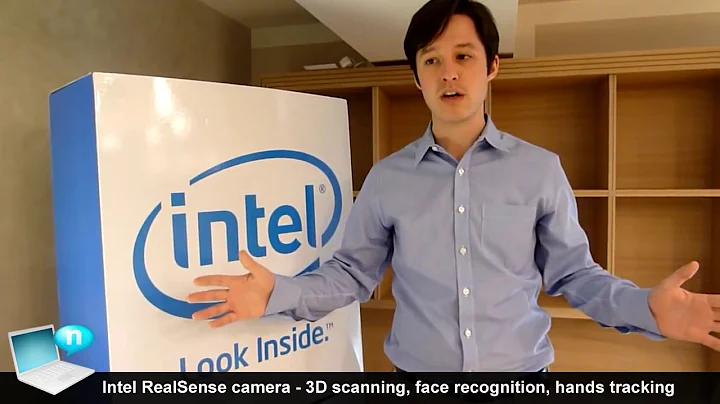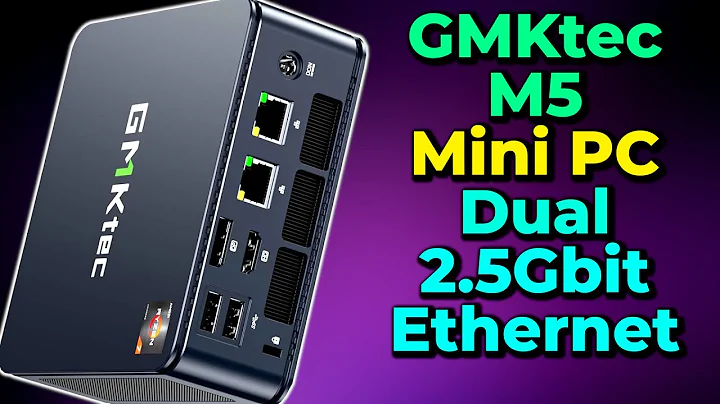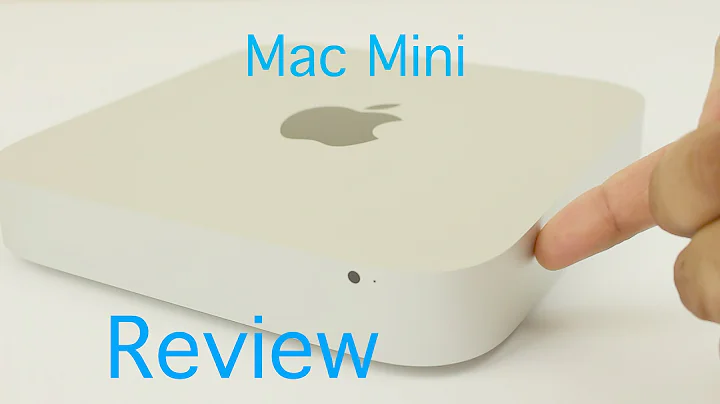Upgrade Your Desktop for Windows XP Retro Gaming with Core 2 Duo E7200 and GT 630
Table of Contents:
- Introduction
- Overview of the Desktop Computer
- Upgrading the Hardware for Retro Gaming
3.1 Video Card Upgrade
3.2 RAM Upgrade
3.3 Processor Upgrade
3.4 Storage Options
- Step-by-Step Guide to Upgrading the Computer
4.1 Opening the Unit
4.2 Removing the Front Panel
4.3 Upgrade Options and Recommendations
4.4 Putting it All Together
4.5 Installing Windows XP
- Benchmark Results and Gaming Performance
5.1 3D Mark Benchmarks
5.2 Gaming Performance
- Conclusion
- FAQ
Upgrading a Desktop Computer for Retro Gaming
Are you a gaming enthusiast looking to relive the nostalgic experience of playing classic Windows XP games on a retro gaming machine? In this article, we will guide you through the process of turning a regular desktop computer into a Windows XP retro gaming PC. We will discuss the necessary hardware upgrades, step-by-step instructions for the upgrade process, benchmark results, and gaming performance. So, let's dive in and start upgrading!
Introduction
With the rise of modern gaming consoles and high-performance PCs, it's easy to forget the joy of playing classic Windows XP games on a retro gaming machine. These older business machines, like the one built by CDM, offer a great foundation for a budget-friendly retro gaming PC. In this article, we will explore how to upgrade the hardware of such a machine to transform it into a capable Windows XP gaming platform.
Overview of the Desktop Computer
Before we delve into the upgrade process, let's take a quick look at the desktop computer we'll be working with. The CDM-built machine features a range of ports on the front, including headphone outputs, microphone input, four USB 2.0 ports, and a firewire port. At the back, it offers a VGA, DVI, six USB 2.0 ports, another firewire port, Gigabit Ethernet, and audio ports. The internal components include an Intel motherboard, a Core 2 Duo E7200 processor, 1GB RAM, and an 80GB Western Digital SATA hard drive.
Upgrading the Hardware for Retro Gaming
To transform this desktop computer into a capable Windows XP retro gaming PC, we need to upgrade several key components. These include the video card, RAM, processor, and storage options. Let's explore each of these upgrades in detail.
Video Card Upgrade
To enhance the gaming capabilities of the machine, we recommend upgrading the video card. Since the desktop computer is a small form-factor machine with low-profile slots, it is essential to select a low-profile video card. While options for Windows XP gaming are limited, a Nvidia GT 630 or a more powerful card like the 750 or 750 Ti would be ideal. However, due to their current high prices, the GT 630 will suffice for this project.
RAM Upgrade
Upgrading the RAM is crucial for smooth gaming performance. With only 1GB of RAM, the system struggles to handle demanding games. To remedy this, we recommend installing two 2GB sticks of DDR2 RAM, totaling 4GB in a dual-channel configuration. This upgrade will provide a significant boost in performance.
Processor Upgrade
Although the Core 2 Duo E7200 processor is suitable for Windows XP gaming, upgrading to a faster dual core or even a quad-core processor can further improve performance. Options like the Core 2 Duo E8600 or the Q9400 are worth considering, but the E7200 should suffice for most Windows XP games.
Storage Options
While the built-in 80GB SATA hard drive is adequate for installing a few games and benchmarks, those looking for faster load times and a larger capacity can consider upgrading to a more modern model. Solid-state drives (SSDs) are not recommended for Windows XP due to lack of support, but a solid-state hybrid drive (SSHD) can provide SSD-like performance without compatibility issues. However, for this project, the existing hard drive will suffice.
Step-by-Step Guide to Upgrading the Computer
Now that we have discussed the necessary hardware upgrades, let's walk through the step-by-step process of upgrading the desktop computer for retro gaming.
1. Opening the Unit
Remove the screws on the case to access the internal components. Inside, you will find the power supply, hard drive, cooling fan, and expansion slots.
2. Removing the Front Panel
Loosen the tabs on the front panel to remove it. This will provide access to the computer's internals. Additionally, latches may need to be lifted to open certain parts.
3. Upgrade Options and Recommendations
We discussed the upgrade options for the video card, RAM, processor, and storage in detail earlier. Evaluate your budget and gaming requirements to determine the best components for your setup.
4. Putting it All Together
Once you have gathered the necessary upgrade components, follow the manufacturer's instructions to install them into the desktop computer. Ensure all connections are secure and properly seated.
5. Installing Windows XP
Using a USB optical drive, install Windows XP on the upgraded desktop computer. Partition and format the hard drive during the installation process.
Benchmark Results and Gaming Performance
After completing the hardware upgrades and installing Windows XP, it's time to assess the system's performance through benchmark tests and gaming trials. Here are the results:
1. 3D Mark Benchmarks
Running 3D Mark 2001, 03, 05, and 06, the upgraded desktop computer achieved scores of 33,793; 20,631; 14,164; and 7,644, respectively. These scores demonstrate the computer's improved graphics capabilities.
2. Gaming Performance
Several games were tested on the upgraded system. Far Cry, Painkiller, Prince of Persia: The Two Thrones, Halo, F.E.A.R., Return to Castle Wolfenstein, and Insane all ran smoothly at high frame rates, showcasing the machine's ability to handle demanding Windows XP games. However, Crysis proved to be too resource-intensive for the GT 630, requiring a more powerful video card to achieve satisfactory performance.
Conclusion
By upgrading a regular desktop computer with the recommended enhancements, you can create a capable and budget-friendly Windows XP retro gaming PC. The hardware upgrades, including the video card, RAM, processor, and storage, significantly improve gaming performance. Whether you're reliving your favorite classics or exploring new Windows XP games, this retro gaming machine will provide an enjoyable gaming experience.
FAQ
Q: Can I use a higher-end video card for even better gaming performance?
A: While a more powerful video card would undoubtedly enhance gaming performance, it is essential to consider compatibility with the small form-factor and low-profile slots of the desktop computer. Additionally, higher-end video cards may require a more substantial power supply.
Q: Can I upgrade the processor to a quad-core for even better performance?
A: Upgrading to a quad-core processor, such as the Q9400, can provide a performance boost for multitasking and newer games that utilize multiple cores. However, for Windows XP gaming, a faster dual-core processor like the E7200 should be sufficient.
Q: Should I consider using an SSD for faster load times?
A: While SSDs offer significant speed improvements for modern systems, Windows XP's lack of TRIM support can lead to decreased performance and lifespan of the SSD. It is best to stick with a traditional hard drive or opt for an SSHD, which combines the benefits of both.
Q: Can I play games at higher resolutions with the upgraded system?
A: Depending on the capabilities of your monitor, you may be able to play games at higher resolutions with the upgraded system. However, higher resolutions can put more strain on the video card and may require additional upgrades for optimal performance.
Q: Can I install modern operating systems like Windows 10 on this retro gaming machine?
A: While it is technically possible to install modern operating systems like Windows 10 on the upgraded system, it is recommended to stick with Windows XP for the best compatibility and performance with older games.


 43.1K
43.1K
 17.49%
17.49%
 24
24


 < 5K
< 5K
 1
1


 < 5K
< 5K
 37.79%
37.79%
 9
9


 < 5K
< 5K
 31.09%
31.09%
 3
3


 24.9K
24.9K
 16.55%
16.55%
 66
66


 < 5K
< 5K
 25.2%
25.2%
 10
10


 161.6K
161.6K
 54.33%
54.33%
 12
12


 134.6K
134.6K
 63.43%
63.43%
 10
10
 WHY YOU SHOULD CHOOSE TOOLIFY
WHY YOU SHOULD CHOOSE TOOLIFY


































